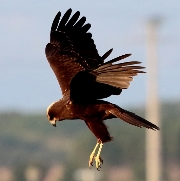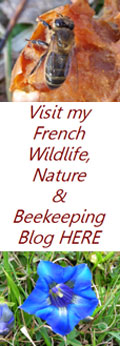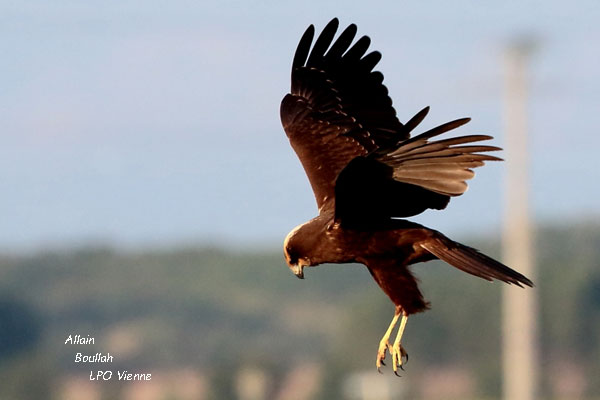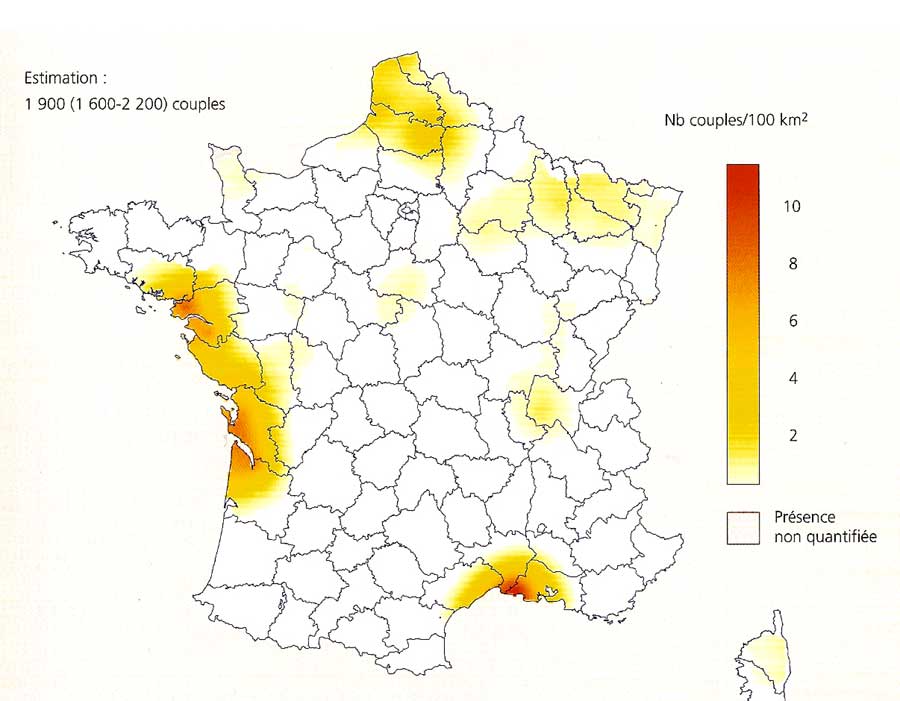




Marsh
Harrier - Circus aeruginosus
- Busard des roseaux
Overview.
Marsh Harriers, which are generally split into 6 sub-species, can be
found in most parts of the world with the exception of North and
Appearance.
Marsh Harriers, as the largest Harrier in
Females are slightly larger than males and have a more uniform colour with a cream head and throat, but are less striped or flecked. Both the wings and tail are brown, with the under parts a darker brown.
When in flight the wings are often held in a shallow “V”.

Behaviour,
Habitat and Diet.
Although they are, as the name suggests, principally birds of wetlands – lakes, marshes and coastal regions, they can also be found on open land and increasingly where there is cultivation of cereals. They are a great predator of waterfowl eggs and chicks but also take frogs, lizards, insects and small mammals with the occasional rabbit. In many ways they are an extraordinarily lazy and apathetic bird that doesn’t like, (or perhaps doesn’t need), to waste too much energy on hunting. They are usually seen gliding around at low altitude with very few flaps of the wings choosing easy targets such as very young water birds, birds that are injured or sick or perhaps a frog that is sunning itself, definitely not a bird that makes life hard for itself. They invariably catch their prey using the left talon and surprisingly despite their size and strength many potential victims escape. Outside of nesting season where there are abundant reeds and sedges communal roosts are often formed with up to 25 birds or more. The Marsh Harrier is very quiet and rarely cries or calls outside of the breeding season
Reproduction.
During courtship, the male emits a persistent “kiiuu” and the female flying with him responds with “iiuu”. The bonding or mating displays which start in March comprise high climbs and rapid falls ending with a descent that almost touches the ground with wings folded and laud cries. A nest is built by both birds starting two or three weeks before actual copulation, with the male bringing nesting material that the female weaves in the reeds. As the time draws close for copulation the female rarely, if ever, leaves the nest site. During this period she is fed by the male. Nest territory is defended fiercely and any attempt to build a nest by another couple less than at least 60 meters will result in an immediate aggressive reaction, as will any intruder that approaches to close. The female produces 3 to 8 eggs at intervals of two or three days to five days. The eggs are bluish white, matte and often flecked with dark spots and incubation for each egg is about 36 days. There is a large size difference between the eldest and the youngest chicks but there is no aggression between them and, unlike some other species of raptor, they can all be successfully raised. The male feeds the female and young during incubation and rearing of chicks. The male calls out when he has prey and is approaching the nest area and the female flies out from the nest to meet him. He will either pass this to her in flight when he drops it to her and she deftly plucks it from the air, (always a wonderful sight), or alternatively he will place it on the ground and she takes it from there. Like all young Harriers the nestlings are very aggressive and will defend themselves with beaks and talons against any intruder. The young are fully feathered at around 28 days and during this time the female rarely leaves the nest except to take prey from the male. They begin to fly between 35 and 40 days and the young continue to stay with the parents and be fed by them up to about 60 days.
Status, threats and menaces
Habitat degradation
and loss are serious concerns with the disappearance of 50% of French
wetlands having already taken place, although as noted they seem to be
increasingly nesting in wheat fields which also present dangers.
Pollution and poisoning are also always of concern but overall the
populations are small but stable and there are a number of conservation
projects that include them.

They are typically between 48 to 56 cm in length with a 120 to 135 cm wingspan
Females weigh 500 to 800g and Males 400 to 650g
Lifespan in the wild of 17 years.